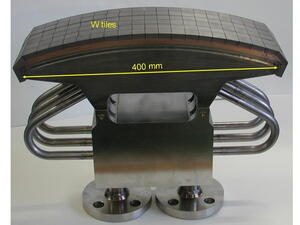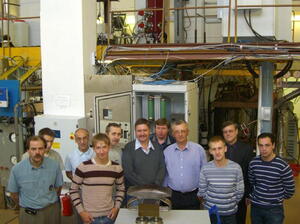Qualification progress — Russian divertor prototype exceeds requirements
The plasma-facing components of the ITER Divertor, together with the Toroidal Field Magnet Conductors and the Blanket Modules, require a qualification of each of the seven ITER Parties prior to starting of the procurement.
This means that each Party, that is allocated to one of these critical procurement packages, must first "qualify" by demonstrating its technical capability to carry out the procurement with the required quality, and in a timely manner. Regarding the Divertor, this qualification is achieved via the successful manufacturing of medium-sized "Qualification Prototypes" (QPs), which are then subject to high heat flux performance tests in the electron beam facility Tsefey-M located at the Efremov Institute, St. Petersburg, RF.
In order to enable the testing of these medium-size component (about half a meter long), the Tesefey-M facility was substantially upgraded during the last year. The maximum power delivered by the electron beam gun was increased by more than a factor of 3, leading to a new value of 200 kW. The primary cooling circuit was also modified to simulate the same hydraulic parameters (temperature and pressure) of the ITER divertor.
The Russian Domestic Agency (RF DA) is allocated with the procurement of the so-called "Dome" component of the ITER divertor, which consists of a plasma-facing part, made of tungsten tiles joined onto copper alloy substrate, and a steel support structure. The performance requirement, specified by ITER for the dome QP, are 1000 cycles at 3 MW/m^2, plus 1000 cycles at 5 MW/m^2 (absorbed surface heat flux).
As planned, the RF DA has delivered its first QP in July 2008, which was high heat flux tested in August 2008. The test results were above any optimistic expectations. The QP successfully withstood the specified design requirements and its "health" was so good that it was decided to "double the hit" on it. Therefore it was decided to continue the test at double design heat flux, namely 10 MW/m2. The component could still survive additional 400 cycles at this extreme heat load.



